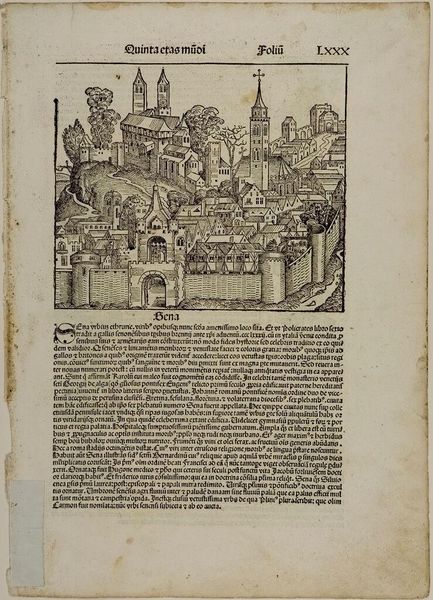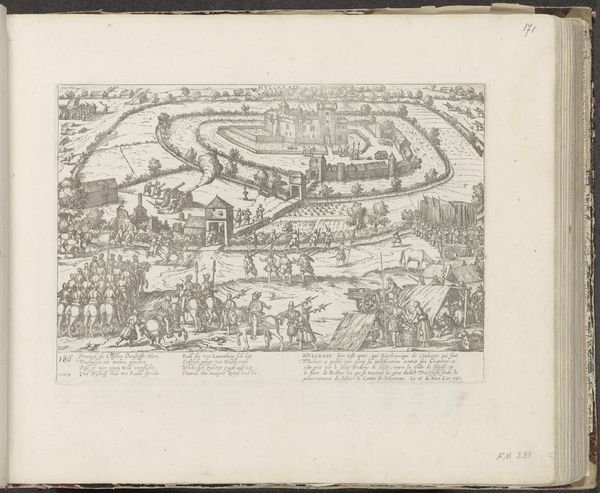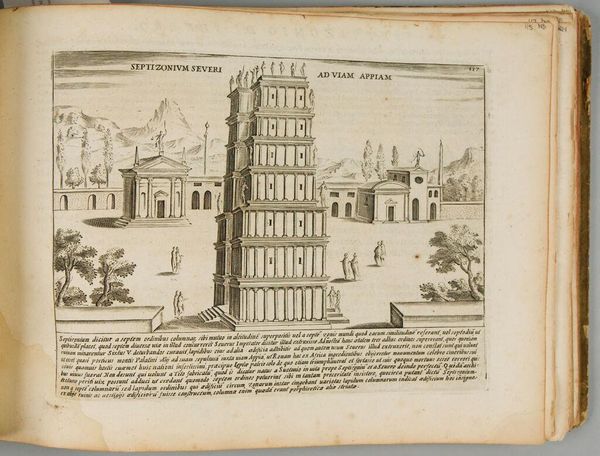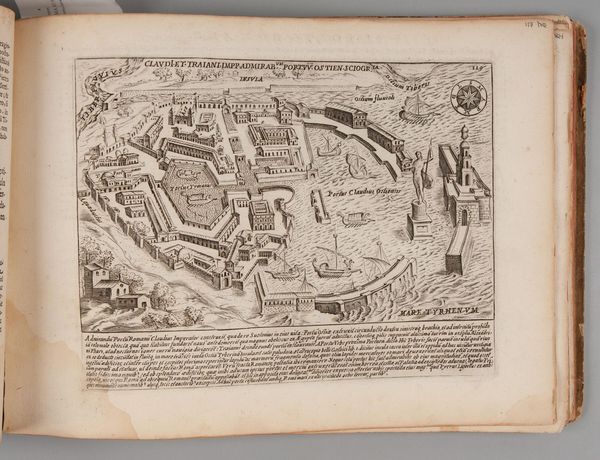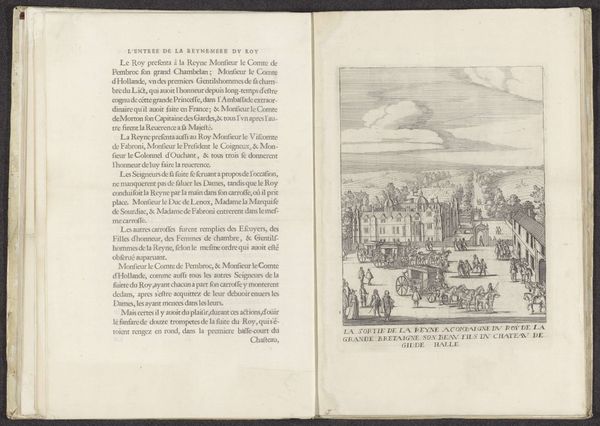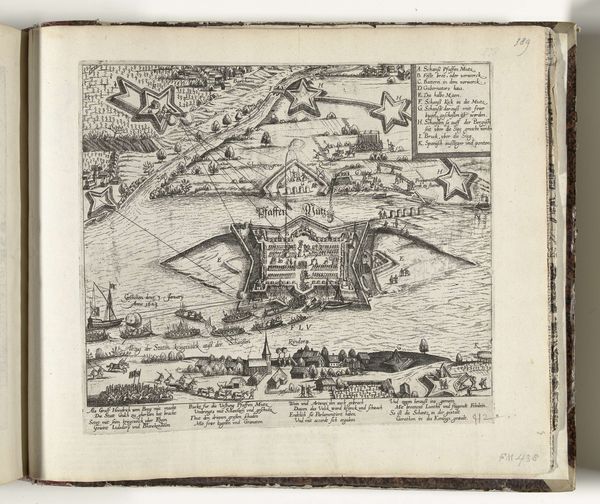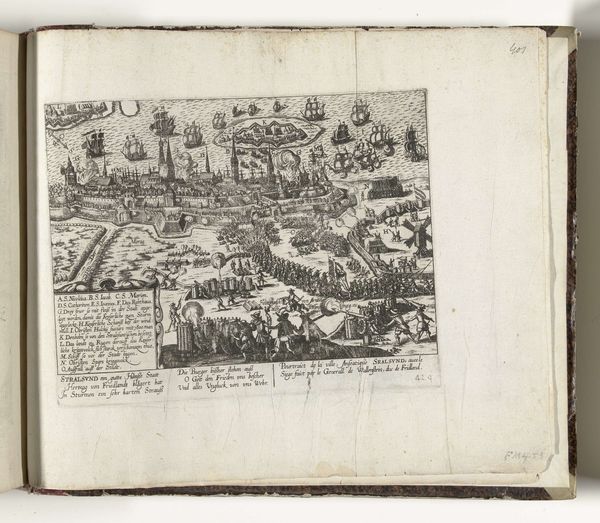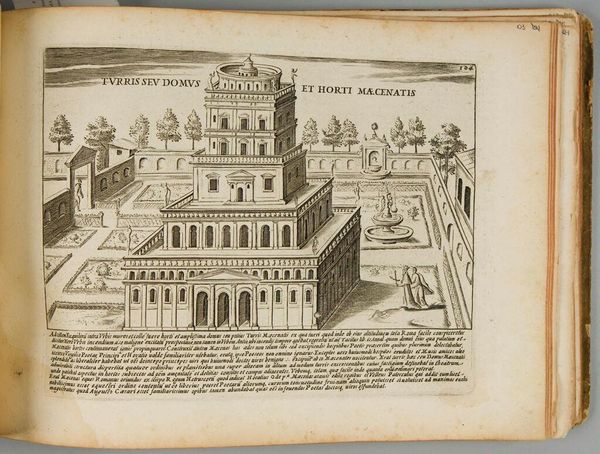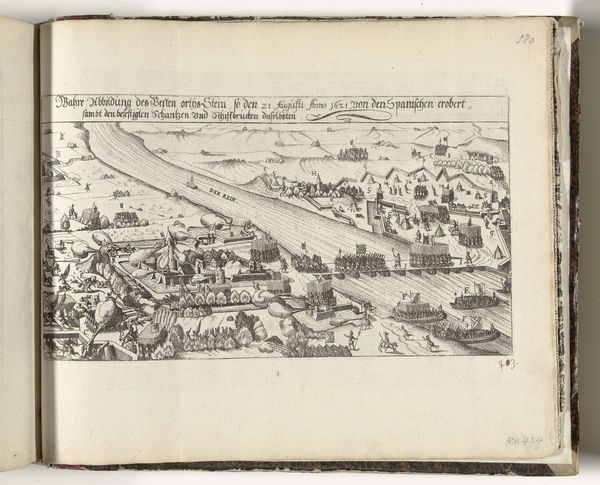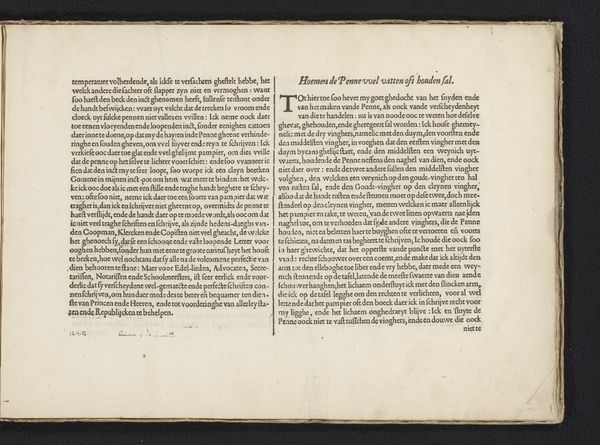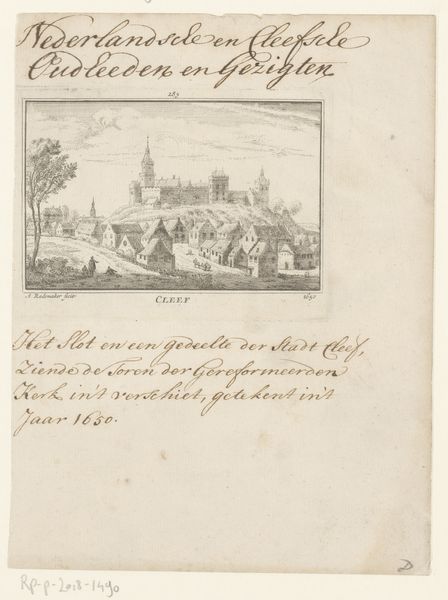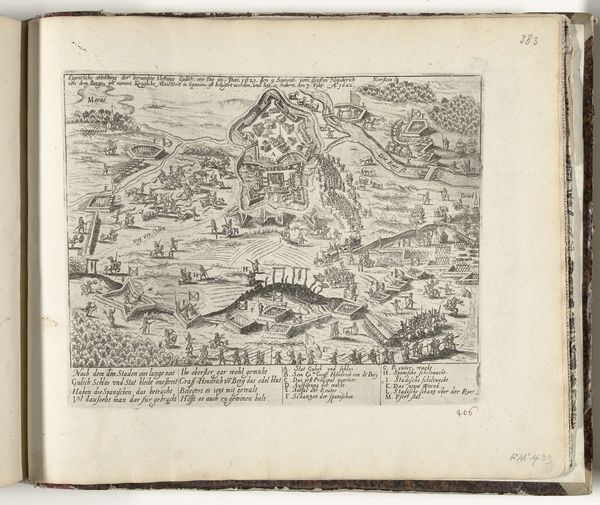
drawing, graphic-art, print, etching, ink
#
drawing
#
graphic-art
#
baroque
# print
#
etching
#
ink
#
cityscape
Dimensions: height 290 mm, width 340 mm
Copyright: Rijks Museum: Open Domain
Curator: We’re looking at "Titelprent met titel, tekst en gezicht op Bologna," a 1660 etching by Giuseppe Maria Mitelli, held at the Rijksmuseum. Editor: It's like a tightly packed stage set. The bold lettering up top, then all that crammed text, finally resolving in the slightly awkward city view at the bottom. It feels unbalanced but deliberate, almost playful. Curator: Notice the title literally translates to ‘Title Print with title, text and view of Bologna.’ This piece really embodies the concept of "graphic art"—how image, text, and design all coalesce. Editor: And the symbolic weight it all carries! The monumental script proclaims 'The Arts Prevail,’ leading to an ode to Neptune. He looms as a powerful symbol for Bologna's cultural ascendance and maybe a not-so-subtle visual metaphor for artistic patronage. Curator: Precisely. Mitelli, born into a family of printers and engravers, surely understood the economic realities of artmaking in his time. Neptune wasn't merely a classical allusion but a social marker. This piece functions as a kind of advertisement or proposal. He needed to show mastery of medium and command of visual metaphor. The ink, paper, and etching are vehicles for commerce and reputation. Editor: Absolutely. It's fascinating how the cityscape appears almost subservient to the text above, as if the city’s buildings are merely illustrative footnotes to the ideas being presented. Look at how that tilting tower gives it a precarious, teetering vibe! It almost whispers a concern for the transience of earthly power and human endeavor. Curator: The lean, gestural lines, done with an etching needle, capture that transience but simultaneously affirm the engraver's ability to fix it into a reproducible image. It’s a statement on skill. Editor: True. It gives us layers to unpack regarding social status, artistic prowess and what lasts, what doesn't… I find that deeply resonant. Curator: And considering the context of the piece's creation—Bologna in the 17th century—the craftsmanship is deeply telling. Thanks for guiding us. Editor: My pleasure. It has me wondering what this symbolic dance might suggest today… something for further reflection, certainly.
Comments
No comments
Be the first to comment and join the conversation on the ultimate creative platform.
